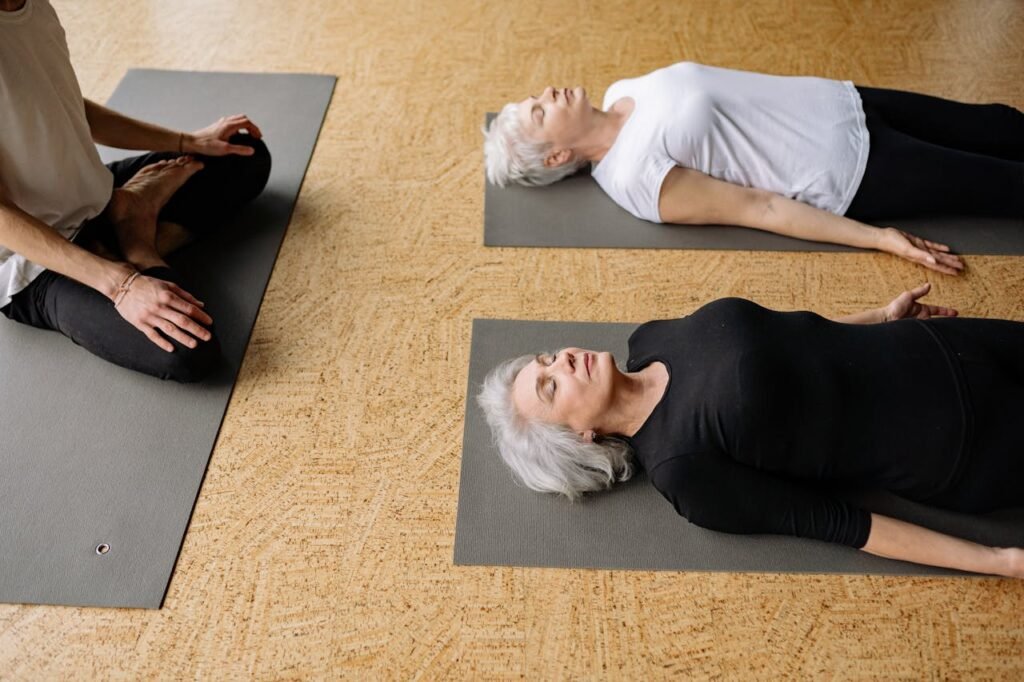In a frenzied world, finding moments of peace can seem almost impossible. Yet, a powerful tool exists within us, always accessible and remarkably simple: our breath. Mindful breathing, the ancient practice of bringing awareness to each inhalation and exhalation, holds transformative power for mental and physical health. In this article, we’ll unveil the science, techniques, and practical benefits of mindful breathing, using clear British English, so you can harness its potential in your daily life.
What Is Mindful Breathing?
Mindful breathing is the deliberate act of focusing your attention on your breath, observing it without trying to change its rhythm. Instead of breathing unconsciously — as we usually do — you bring full awareness to each breath. This anchor to the present moment quietens racing thoughts and cultivates inner peace.
The Science Behind Mindful Breathing
Research shows that conscious breathwork triggers the parasympathetic nervous system, which controls the body’s ‘rest and digest’ functions. This activation helps reduce stress hormones like cortisol and lowers heart rate and blood pressure. Brain scans have found that mindful breathing lights up the prefrontal cortex, the region associated with emotional regulation, decision-making, and focus.
Medical professionals increasingly recommend mindful breathing to manage anxiety, depression, insomnia, and even chronic pain. If you’re curious about the science, the NHS and Mind charity sites offer detailed health information.
Benefits of Mindful Breathing
1. Reduces Stress and Anxiety
Shallow, rapid breathing is common under stress, reinforcing a cycle of anxiety. Mindful breathing breaks that pattern. By observing each breath, you stimulate relaxation, which calms the mind and body.
2. Improves Focus and Concentration
Mindful breathing sharpens your ability to concentrate. By gently guiding your attention back to the breath whenever your mind wanders, you strengthen the neural circuits responsible for attention.
3. Enhances Emotional Regulation
A few minutes of mindful breathing can lessen emotional reactivity, giving you space to respond rather than react impulsively.
4. Promotes Better Sleep
Slowing and lengthening the breath at bedtime signals to your brain that it’s safe to relax, making sleep more accessible.
5. Boosts Overall Wellbeing
Practicing mindful breathing daily can lower blood pressure, support immune function, and promote a general sense of well-being.

How to Practise Mindful Breathing
Mindful breathing can be practised anywhere — at home, at your desk, or even on public transport. Follow this simple guide:
Step 1: Find a Comfortable Position
Sit or lie down, ensuring you’re comfortable but alert.
Step 2: Focus on Your Breath
Gently close your eyes (optional). It may help to place a hand on your stomach and another on your chest.
Step 3: Observe Without Judgement
Notice your breath’s natural rhythm, the air moving in and out. Don’t try to change it.
Step 4: Return Your Focus
When your mind wanders, notice where it goes, then return your attention to the breath.
Step 5: Practise Regularly
Start with 3-5 minutes daily and gradually extend to 10-20 minutes.
Popular Mindful Breathing Techniques
Box Breathing (Square Breathing)
Inhale for a count of four, hold for four, exhale for four, and hold again for four. Repeat for several cycles.
4-7-8 Breathing
Inhale for four seconds, hold for seven, and exhale slowly for eight.
Diaphragmatic Breathing
Focus on expanding your belly (not chest) as you breathe in, engaging the diaphragm for deeper, calmer breaths.
Incorporating Mindful Breathing Into Daily Life
Mindful breathing does not require hours of meditation — consistency and intention matter most. Here are some easy ways to integrate the practice into your day:
- Pause for a minute of mindful breathing before a meeting or stressful task.
- Take five deep mindful breaths before answering emails or phone calls.
- Use mindful breathing when stuck in traffic or waiting in a queue.
Modern apps like Headspace or Calm offer guided mindful breathing exercises.
Mindful Breathing and Emotional Resilience
Building emotional resilience means equipping yourself to handle life’s challenges with patience and calm. Mindful breathing is a proven strategy in this toolset. When you catch yourself overwhelmed by emotion — anger, frustration, sadness — a brief mindfully-breathed pause can help you act thoughtfully rather than react impulsively.
Common Misconceptions About Mindful Breathing
“I have to clear my mind.”
You don’t need a blank mind. The goal is to observe your thoughts and sensations as they arise, then gently guide your focus back to the breath.
“I must breathe in a special way.”
It’s about awareness, not control. Noticing your natural breath is enough, though techniques like box breathing can enhance calmness.
“I’m too busy for mindful breathing.”
Even ten mindful breaths can shift your mood. You can practise while commuting, walking the dog, or brushing your teeth.
Mindful Breathing for Children and Teens
Mindful breathing can also support children and teenagers in managing their emotions and building focus for studies. Simple games like “teddy bear belly breathing” or counting breaths together make the practice engaging and accessible for all ages.
Frequently Asked Questions
What is the difference between mindful breathing and meditation?
Mindful breathing is a form of meditation focusing specifically on the breath. Meditation can involve many other anchors, such as sounds, sensations, or visualisations.
How often should I practise mindful breathing?
It’s beneficial to build a daily habit of mindful breathing, even for just a few minutes. You’ll likely notice results from even short, consistent sessions.
Can mindful breathing help with panic attacks?
Mindful breathing techniques can be effective during panic attacks, helping to calm the mind and body — though professional support is recommended for frequent or severe episodes.
Is mindful breathing safe for everyone?
Mindful breathing is safe for most people. However, if you have certain respiratory issues, consult a healthcare professional for personalised advice.
Are there any resources for guided mindful breathing?
Yes, resources like the NHS, Mind, and mindfulness apps such as Headspace and Calm provide guided exercises and further support.
Final Thoughts
The beauty of mindful breathing is its simplicity and accessibility. Whether your intention is to manage stress, boost focus, improve sleep, or simply find a moment of calm, this practice is available anytime and anywhere. Over time, the benefits accumulate, leading to a more mindful, healthy, and balanced life.
If you’re eager to learn more, expert resources like the NHS Mindfulness page, the Mind charity, or medically reviewed apps like Headspace (https://www.headspace.com), Calm (https://www.calm.com), and NHS Every Mind Matters (https://www.nhs.uk/every-mind-matters/) provide invaluable guidance and support. Why not begin your mindful breathing journey today? Your mind and body will thank you.
Remember: The power to calm, heal, and focus is with you — breath by breath.






